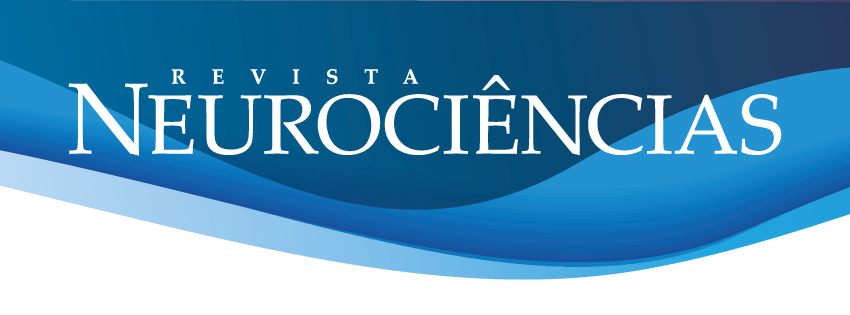Diferenças de performance cognitiva entre bailarinos e atletas
DOI:
https://doi.org/10.34024/rnc.2022.v30.14411Palavras-chave:
Atenção, cognição, atletas, dançaResumo
Introdução. Habilidades cognitivas são importantes para a performance, essas, necessitam serem investigadas. Objetivo. Comparar as capacidades cognitivas de bailarinos e atletas por meio do tempo de reação em uma tarefa de atenção. Método. Estudo composto por 43 adultos entre 18 e 37 anos, com a média de idade de 23,5±5,1 anos para o grupo de bailarinos e 24,6±5,6 anos para o grupo de atletas. A tarefa Flanker Task foi utilizada para medir o tempo de resposta, as etapas do teste foram constituídas por um estímulo de figuras de peixes: cada estímulo teve o peixe-alvo posicionado no centro da tela com a calda voltada para direita ou esquerda. Os participantes responderam sobre a direção do peixe-alvo e pressionaram a seta para esquerda ou direita conforme a posição. As medidas de massa adiposa e massa muscular foram realizadas pelo protocolo de dobras cutâneas e o VO2máx pelo teste de Shuttle Run 20m para avaliar a capacidade máxima de oxigênio. Resultados. Houve uma diferença nas medidas de massa muscular e massa adiposa entre os bailarinos e os atletas, os bailarinos obtiveram valores maiores na média para massa adiposa. O tempo de reação para o teste de Flanker Task dos bailarinos, foi em média de 220,70ms para responder o estímulo enquanto os atletas tiveram uma média de 198,61ms, não havendo diferença significante entre eles. Conclusão. Não há diferença entre o tipo de modalidade com relação ao melhoramento cognitivo e controle inibitório atencional.
Métricas
Referências
Alvarez JA, Emory E. Executive Function and the Frontal Lobes: A Meta-Analytic Review. Neuropsychol Rev 2006;16:17-42. https://doi.org/10.1007/s11065-006-9002-x
Jola C, Davis A, Haggard P. Proprioceptive integration and body representation: insights into dancers’ expertise. Exp Brain Res 2011;213:257-65. https://doi.org/10.1007/s00221-011-2743-7
Krenn B, Finkenzeller T, Würth S, Amesberger G. Sport type determines differences in executive functions in elite athletes. Psychol Sport Exerc 2018;38:72-9. https://doi.org/10.1016/j.psychsport.2018.06.002
Vestberg T, Reinebo G, Maurex L, Ingvar M, Petrovic P. Core executive functions are associated with success in young elite soccer players. PLoS ONE 2017;12:e0170845. https://doi.org/10.1371/journal.pone.0170845
Ginsparg P. ArXiv at 20. J Info Proc Manag 2011;54:415-20. https://doi.org/10.48550/arXiv.2202.10849
Pedersen BK. Physical activity and muscle–brain crosstalk. Nat Rev Endocrinol 2019;15:383-92. https://doi.org/10.1038/s41574-019-0174-x
Chen K. Exercise training improves motor skill learning via selective activation of mTOR. Sci Adv 2019;5:eaaw1888. https://doi.org/10.1126/sciadv.aaw1888
Wang CH, Chang CC, Liang YM, Shih CM, Chiu WS, Tseng P, et al. Open vs. Closed Skill Sports and the Modulation of Inhibitory Control. PLoS ONE 2013;8:e55773. https://doi.org/10.1371/journal.pone.0055773
Christensen JF, Calvo-Merino B. Dance as a subject for empirical aesthetics. Psychol Aest Creat Arts 2013;7:76-88. https://doi.org/10.1037/a0031827
Aglioti SM, Cesari P, Romani M, Urgesi C. Action anticipation and motor resonance in elite basketball players. Nat Neurosci 2008;11:1109-16. https://doi.org/10.1038/nn.2182
Fujihara H, Megumi A, Yasumura A. The acute effect of moderate-intensity exercise on inhibitory control and activation of prefrontal cortex in younger and older adults. Exp Brain Res 2021;239:1765-78. https://doi.org/10.1007/s00221-021-06086-9
Wanderley MR, Hamdam AC. The association between obesity and inhibitory control: a systematic review. Neuropsicol Latinoam 2015;7:24-33. http://dx.doi.org/10.5579/rnl.2013.0223
Ludyga S, Mücke M, Colledge FM, Pühse U, Gerber M. A Combined EEG-fNIRS Study Investigating Mechanisms Underlying the Association between Aerobic Fitness and Inhibitory Control in Young Adults. Neurosci 2019;419:23-33. https://doi.org/10.1016/j.neuroscience.2019.08.045
Martin K, Staiano W, Menaspà P, Hennessey T, Marcora S, Keegan R, et al. Superior Inhibitory Control and Resistance to Mental Fatigue in Professional Road Cyclists. PLoS ONE 2016;11:e0159907. https://doi.org/10.1371/journal.pone.0159907
Pi YL, Wu XH, Wang FJ, Liu K, Wu Y, Zhu H, et al. Motor skill learning induces brain network plasticity: A diffusion-tensor imaging study. PLoS ONE 2019;14:e0210015. https://doi.org/10.1371/journal.pone.0210015
Cona G, Cavazzana A, Paoli A, Marcolin G, Grainer A, Bisiacchi PS. It’s a Matter of Mind! Cognitive Functioning Predicts the Athletic Performance in Ultra-Marathon Runners. PLoS ONE 2015;10:e0132943. https://doi.org/10.1371/journal.pone.0132943
Schmit C, Brisswalter J. Executive functioning during prolonged exercise: a fatigue-based neurocognitive perspective. Inter Rev Sport Exerc Psychol 2018;13:21-39. https://doi.org/10.1080/1750984X.2018.1483527
Walk AM, Raine LB, Kramer AF, Cohen NJ, Khan NA, Hillman CH. Differential Effects of Carbohydrates on Behavioral and Neuroelectric Indices of Selective Attention in Preadolescent Children. Front Hum Neurosci 2017;11:614. https://doi.org/10.3389/fnhum.2017.00614
Eriksen CW. The flankers task and response competition: A useful tool for investigating a variety of cognitive problems. Visual Cogn 1995;2:101-18. https://doi.org/10.1080/13506289508401726
Korzhyk O, Morenko O, Morenko A, Kotsan I. Gender differences in brain processes during inhibition of manual movements programs. Ann Neurosci 2019;26:4-9. https://doi.org/10.5214/ans.0972.7531.260103
Petry NM, Kirby KN, Kranzler HR. Effects of gender and family history of alcohol dependence on a behavioral task of impulsivity in healthy subjects. J Studies Alcohol 2002;63:83-90. https://doi.org/10.15288/jsa.2002.63.83
Cotto JH, Davis E, Dowling GJ, Elcano JC, Staton AB, Weiss SR. Gender effects on drug use, abuse, and dependence: A special analysis of results from the national survey on drug use and health. Gender Med 2010;7:402-13. https://doi.org/10.1016/j.genm.2010.09.004
Mann DT, Williams AM, Ward P, Janelle CM. Perceptual-Cognitive Expertise in Sport: A Meta-Analysis. J Sport Exerc Psychol 2007;29:457-78. https://doi.org/10.1123/jsep.29.4.457
Liao KF, Meng FW, Chen YL. The relationship between action inhibition and athletic performance in elite badminton players and non-athletes. J Hum Sport Exerc 2017;12:574-81. https://doi.org/10.14198/jhse.2017.123.02
Hillman CH, Pontifex MB, Castelli DM, Khan NA, Raine LB, Scudder MR, et al. Effects of the FITKids Randomized Controlled Trial on Executive Control and Brain Function. Pediatrics 2014;134:e1063-71. https://doi.org/10.1542/peds.2013-3219
Voss MW, Vivar C, Kramer AF, van Praag H. Bridging animal and human models of exercise-induced brain plasticity. Trends Cogn Sci 2013;17:525-44. https://doi.org/10.1016/j.tics.2013.08.001
Downloads
Publicado
Edição
Seção
Licença
Copyright (c) 2022 Henrique Lima Ribeiro, Patrícia Espindola Mota Venâncio, Fábio Viegas Caixeta, Bruna Carvalho Fernandes, Isabela Almeida Viana Ramos

Este trabalho está licenciado sob uma licença Creative Commons Attribution 4.0 International License.
Como Citar
Aprovado 2022-11-29
Publicado 2022-12-14


